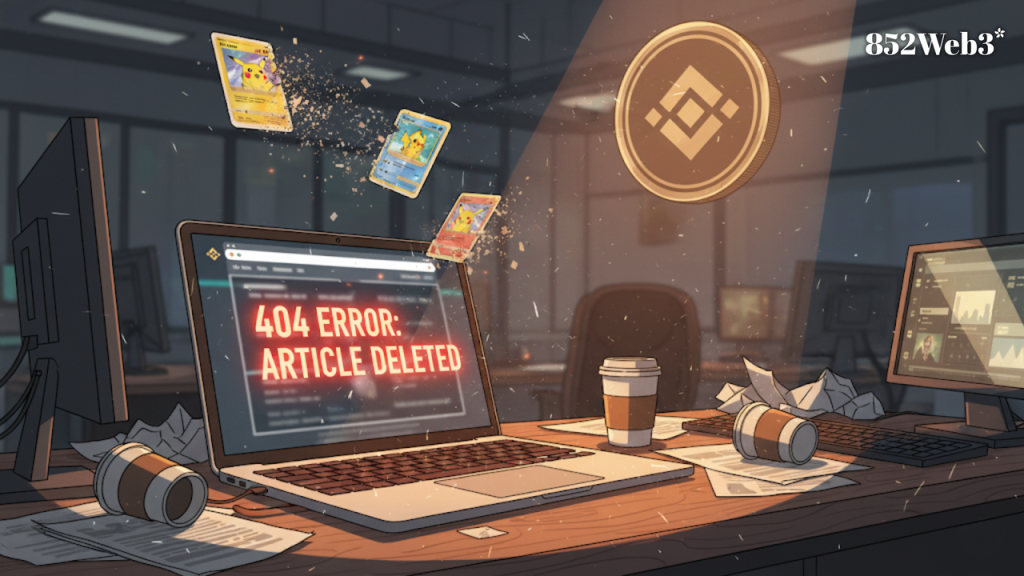When Binance said it was just an educational piece, the market heard “Trading Card RWA is the next big thing.”

A Blog Post That Sparked a Narrative
Earlier this week, Binance published an article titled “Pokémon x Blockchain — Why Tokenized Pokémon Cards and Other Assets May Be the Next Big Thing.” The post highlighted the rise of tokenized trading card markets and even mentioned specific on-chain projects like Collector Crypt, triggering speculation that Binance was signaling its next strategic move.
Within hours, the article spread across X, fueling excitement around “card RWA” (real-world assets). Soon after, Binance co-founder Yi He stepped in — clarifying on X that the piece was educational, not an official stance, and had been removed to avoid misinterpretation. Ironically, the deletion only amplified attention on tokenized collectibles.
Why Binance Pulled the Plug
Several factors likely drove the decision:
First, compliance sensitivity. Most trading card platforms rely on “loot box” or “mystery pack” mechanics—models often scrutinized for gambling-like elements. In several jurisdictions, that alone can raise red flags for a regulated exchange.
Second, ecosystem strategy. Many of the current tokenized card projects are built on Solana or Polygon, not BNB Chain. Promoting them could easily be read as “boosting rival ecosystems.” For a global exchange managing brand perception, cooling things down was a pragmatic move.
Finally - and perhaps most crucially—there’s the on-chain architecture debate. Almost all trading-card tokenization platforms today use a hybrid model: NFTs serve as vault certificates, while the physical cards remain in third-party storage. When a player opens a digital pack, the result is recorded off-chain; the NFT is minted only when the user claims or redeems it. Redeeming a physical card usually requires burning the NFT first.
This design improves UX and cost efficiency but leaves the process dependent on centralized servers. A fully on-chain approach would require every card—its image, attributes, and rarity—to be sealed into an NFT and deployed via smart contract from the start, making the entire lifecycle transparent and verifiable. Most platforms aren’t there yet, and that’s now the heart of the industry’s trust debate.
The Bigger Picture: RWA Is Still BNB Chain’s Core Play
Deletion doesn’t mean disinterest. RWA remains a key pillar in BNB Chain’s roadmap. Recent data shows that RWA assets on BNB Chain have surpassed $500 million, spanning real estate, credit products, and tokenized funds. With low fees, fast settlement, and the One BNB architecture connecting issuance, storage, and governance, the chain is positioning itself as one of the most compliance-ready ecosystems for asset tokenization.
Could TCG Become BNB Chain’s Next Breakout Moment?
According to CoinGecko, trading volume for tokenized Pokémon cards hit $124.5 million in August 2025, up more than 5× since the start of the year. Rare cards have even outperformed the S&P 500 over certain periods — proof that collectibles can bridge Web2 fandom and Web3 finance.
The current action may be happening on Solana and Polygon, but many observers believe it’s only a matter of time before a “card king” project emerges on BNB Chain — one built with stronger compliance, transparency, and on-chain verifiability.
💭 Closing Thought: Binance deleting a post doesn’t end the story — it simply highlights how quickly narratives move. If card collectibles are Web3’s next cultural bridge, the real question is: who will build the version that actually lasts?

